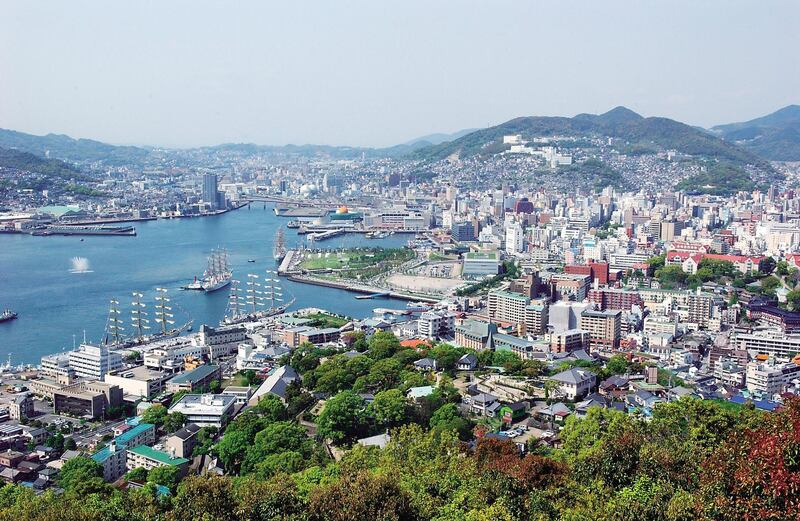Why Nagasaki?
Japan's westernmost city, in the island of Kyushu in the country's far south-west, cosmopolitan Nagasaki, overlooks Omura Bay. Although most people know only about Nagasaki's dark past, when it suffered a US nuclear attack in 1945, it has a rich history as the birthplace of Christianity in Japan, and as a multi-cultural trading post during the 1600s.
Later, Nagasaki was the epicentre of the Meiji Industrial Revolution, with iron, shipbuilding and coal industries – merchants from many countries made Nagasaki their home and built western-style mansions here, also bringing their cultural influences and food habits.
Nagasaki was the first city in Japan where all the goods – bread, potatoes and pasta etc – were imported. Besides Dutch and Portuguese influences, the city has one of Japan’s three main Chinatowns, with a large Chinese population.
Nagasaki is also a culinary haven – it has its own fusion cuisine called Shippoku Ryori – a medley of Japanese, Chinese and western dining styles. It also has the special Sasebo Burger, which was introduced in the 1950s by American Navy personnel stationed in Sasebo.
In late spring to early summer, the city hosts numerous flower viewing festivals, such as the Omura Flower Festival, which runs until June 20 and shows off more than 21 types of cherry blossoms. For more go to www.visit-nagasaki.com.
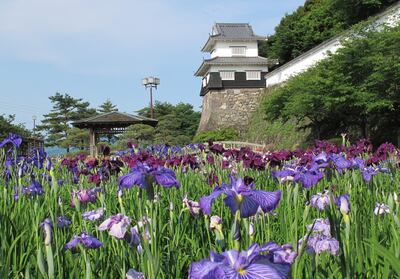
A comfortable bed
Hotel Garden Terrace (www.gt-nagasaki.jp) is probably the most luxurious hotel in the city, with a spectacular location, halfway up Mount Inasa. This beautiful property was designed by award-winning architect Kengo Kuma, and the building itself is a work of art. Every room offers an ocean view. Doubles start at around 25,000 Yen per night (Dh800).
Nisshokan Bettei Koyotei (5 Chome-13-65 Tateyama, Nagasaki) is a Japanese-style ryokan located 10 minutes from the Peace Park. With traditional tatami mat floors, wooden bathtubs and Japanese dinners, this offers an authentic local experience. Doubles start at about ¥21,452 (Dh730) per night.
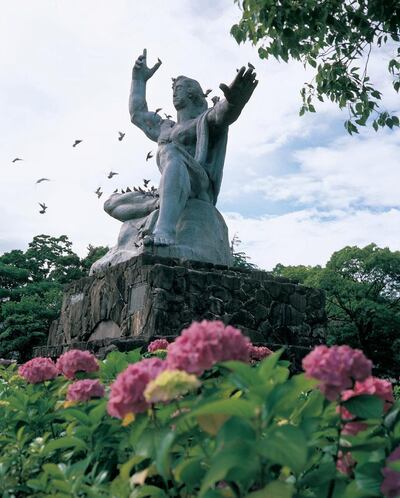
You can also choose to base yourself in the luxurious Watermark Hotel Nagasaki, which is 40km from the airport, in Sasebo, located in a Dutch theme park. This hotel in a seaside location allows you to explore Nagasaki from a relaxed environment. You can also access the theme park Huis Ten Bosch easily. Doubles start at about Dh450 (www.watermarkhotelnagasaki.com/en).
Find your feet
Start by visiting the Nagasaki Atomic Bomb Museum (www.nagasakipeace.jp/english) and then pay your respects at the next-door Peace Park, which was the epicentre of the atomic bombing on August 9, 1945. Walk to the Peace Fountain with its beautifully landscaped gardens, Seibo Kitamura's Peace Statue, and the memorials for peace donated by various countries.
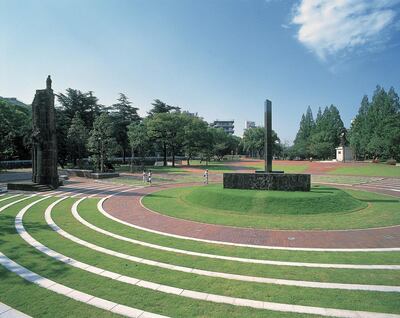
Drive to Glover Gardens, set on a hillside linked by walkways and escalators – a collection of reassembled western homes with Victorian architecture and design, around the house of the Scottish entrepreneur Thomas Glover (1838-1911).
Make your way to the Oura Catholic Church, which is Japan's oldest Gothic church, built in the 19th century under the supervision of a French missionary, Petit Jean. Close by is the Dutch Slope, a steep paved stone path that contains attractive clapboard buildings preserved as museums, cafés, consulates or private homes. End with a walk along the Nakashima River, with its 17 stone bridges.
Meet the locals
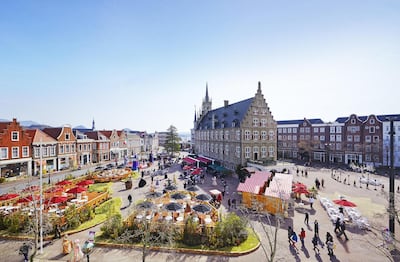
The best way to get a glimpse into local life is to take a ride on the vintage trams that trundle down the steep streets and date to the 1940s. Take a breather at Kazagashira Park, a tranquil spot on top of a steep hill, which gives you a great view of the harbour. This is where the locals come for a peaceful respite from the city – it has a small teahouse and the statue of the legendary warrior Sakamoto Ryoma.
Book a table
Book a table at Hamakatsu to try local Shippoku-ryori (6-50 Kajiya-machi, Teramachi, 0081 95-826-8321); a set menu for two costs about ¥3,700 (Dh120). Head to Shikairo (4-5 Matsugaemachi, Tel +81 95-822-1296) near Glover Garden, to try the local Chinese speciality, champon, which started as a cheap, filling meal for Chinese students in the city. Set meal costs ¥1,600 (Dh50). To try a local, Turkish-inspired speciality called Toruko Rice – pilaf rice and spaghetti accompanied with pork cutlet topped with sauce, head to football-themed Café Restaurant Lekker (www.lekker.co.jp). A set meal costs about ¥168 (Dh54).
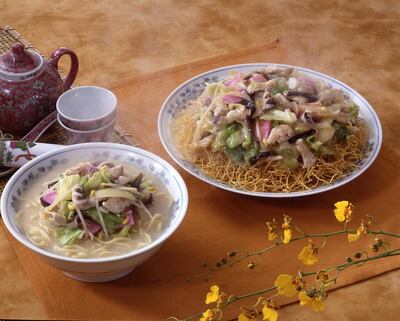
Shoppers’ paradise
Nagasaki is a hub for many traditional crafts, from pottery to ceramic art and kites. A good place to shop is the Nagasaki Souvenir Street inside Amu Plaza, which has many local crafts and souvenirs.
Hamanomachi Arcade is the city’s main retail space – a sprawling mall with more than 700 stores. Check out Tasaki, a jewellery store that specialises in pearl bracelets and necklaces.
Pick up the local speciality – castella cake brought into Japan in the 16th century by a Portuguese missionary. Made with egg, flour, and sugar, today this has several versions. The best places are branches of Bunmeido or Shokando.
Don’t miss
Visit the Nagasaki Prefectural Art Museum (www.nagasaki-museum.jp/english), a showstopper of a building with its glass and play of light, designed by legendary architect Kengo Kuma. The entrance fee is ¥400 (Dh13). Dejima island (www.nagasakidejima.jp) has been restored into a museum, with 17 buildings that feature exhibits about the spread of trade, western learning and culture, and even a kimono rental business (entrance fee Dh16).
For a great view of the port city, take the stylish and sleek Inasa gondola cable car to the observation deck on Mt Inasa, for a panoramic view of the city with its harbour lights.
What to avoid
Don’t try to cycle through Nagasaki’s hilly and sloping streets. Even the locals avoid this dangerous pursuit.
Getting there
Korean Air (www.koreanair.com) flies from Dubai to Nagasaki via Seoul from Dh4,500 return including taxes. The flight takes 13 hours in total.
________________________
Read more:
New women-only adventures around the world
Culture with a bullet (train) in Kanazawa, Japan
Hotel review: Andaz Tokyo Toranomon Hills, Tokyo, Japan
________________________
